
- Home
- Travel Packages
- Top Destination
-
Travel Attraction
By Category
Top Attraction

- Travel Agents
- Car Rentals
- Hotels
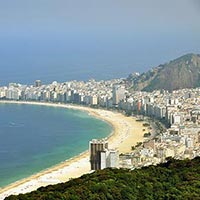
Rio De Janeiro, also acknowledged as the most Marvelous city in Brazil, has always been a spot of attraction for thousands of tourists from decades. The breathtaking scenic beauty and pulsating atmosphere of the city is a treat to eyes. Situated on the Atlantic Ocean in the southeast portion of tropical zone of South America, Rio De Janeiro is the second largest city in Brazil and third largest in South America. The city is popular for its spectacular Beaches, enchanting peaks, vibrant Samba Dancers, carnivals and much more. How often do you get a chance to witness mountains in the city center? Seraphic aura of the city demands travelers to lose their senses and sway to the samba beats. So put a break on the rest of your holiday plans, visit Rio De Janeiro and spot the heaven right here on earth. Nearest Airport- Rio de Janeiro-Galeao International AirportDistance From Downtown- 20 kms
Explore More
Known for its pulsating night clubs, lavish restaurants and diverse population, Sao Paulo is considered to be the largest city in Brazil and 3rd largest metropolis city around the world. The fast paced life and the sky kissing buildings attract a large number of tourists and migrants every year. Sao Paulo, popularly known as Sampa is one the richest cities in South America and serves as a home place to more than 10 million people. You will find the best of museums, theatres, cultural centers in Sao Paulo. A perfect place to visit if you would prefer spending a night in town over a day on sea shore; Sao Paulo is a haven for travellers who love exploring big cities. The main attraction of the place is the wide variety of luscious restaurants and diverse cultural display it offers to its visitors. Nearest Airport - São Paulo-Guarulhos International AirportDistance - 24 Kilometers
Explore More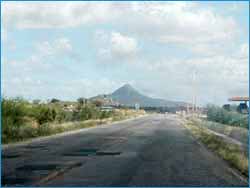
Situated in the southern part of Brazil, Santa Catarina is a state known for its beautiful beaches, its island of the same name and for its high levels of economic well-being as compared to the rest of the country. Inhabited mainly by people from Spain, Portugal, Germany, Italy and Austria in the past, this place still bears their traces on its culture and architecture. The state’s landscape is dotted with several places, catering to rural tourism, ecological tourism, adventure sports, historic monuments and sightseeing and religious tourism. There is a diverse topography ranging from a shoreline touching the Atlantic to highlands reaching up to an altitude of 1,827 m. Santa Catarina is home to migratory penguins during the winters, whereas its capital Florianópolis, attracts many beach lovers during the summers. The state also has some small towns worth exploring. In a nutshell, Santa Catarina is a place for every kind of vacationer to break away from the routine life.
Explore More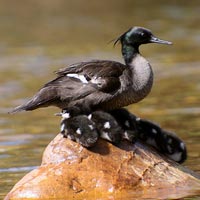
Minas Gerais, located in southeastern Brazil, is one of the country’s most culturally rich and historically significant states. Known for its mountainous terrain, the name "Minas Gerais" translates to "General Mines," reflecting its history as a major mining hub. The state was central to Brazil's gold rush during the 18th century, and cities like Ouro Preto, Mariana, and Tiradentes are preserved as UNESCO World Heritage Sites due to their colonial architecture. Minas Gerais boasts a diverse landscape, from the lush forests of the Serra do Cipó National Park to the arid plateaus of the Cerrado region. The state’s capital, Belo Horizonte, is a modern metropolis with a blend of cultural, culinary, and economic significance. Minas is renowned for its traditional cuisine, especially the iconic *pão de queijo* (cheese bread), *feijão tropeiro* (bean dish), and its cheeses, which are some of the best in Brazil. Economically, Minas Gerais has a diversified base, with industries in mining, agriculture, and manufacturing. It is a major producer of coffee, milk, and iron ore. The state also plays a central role in Brazilian politics, education, and arts, making it an integral part of the nation’s identity.
Explore More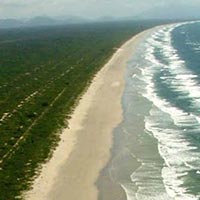
Paranaguá is a historic city located in the southern state of Paraná, Brazil, renowned for its deep maritime heritage and scenic beauty. Situated along the Atlantic Ocean, it is one of the oldest cities in Brazil, founded in 1648. The city is a key port for the export of grains, particularly soybeans and corn, and its strategic location along the Paraná coast has made it an important hub for trade and commerce. The city’s charming colonial architecture, including the iconic Church of Our Lady of the Rosary and the historic port area, adds to its cultural allure. Paranaguá is also the gateway to the spectacular Ilha do Cardoso State Park and the surrounding coastal region, known for its rich biodiversity and pristine beaches, making it a popular destination for ecotourism and adventure seekers. In addition to its natural beauty, Paranaguá has a vibrant cultural scene, influenced by Portuguese, Italian, and indigenous traditions. The city's festivals, such as the *Festa de Nossa Senhora do Rocio*, celebrate its religious and cultural heritage. Paranaguá’s economy is further supported by its fishing industry, with seafood being a local staple, particularly in its well-known seafood markets. With its blend of history, culture, and natural resources, Paranaguá offers a glimpse into Brazil’s diverse coastal life.
Explore More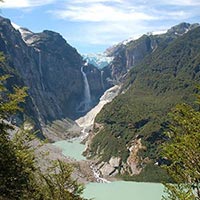
It seems there may be some confusion. Aysén is actually a region in southern Chile, not Brazil. Located in the Patagonian region, Aysén is known for its stunning landscapes, including rugged mountains, vast glaciers, temperate rainforests, and crystal-clear rivers. This region is remote and sparsely populated, offering some of the most pristine wilderness in South America, making it a paradise for nature lovers and outdoor enthusiasts. Aysén is famous for the Carretera Austral, a scenic highway that connects the region to the rest of Chile, passing through jaw-dropping views of Patagonia's natural beauty. If you were thinking of a different location in Brazil or would like more information about Aysén or another part of the world, feel free to let me know!
Explore More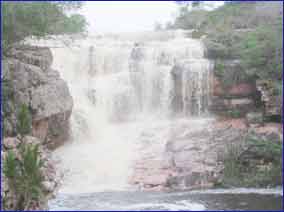
Bahia is a vibrant state located in the northeastern region of Brazil, known for its rich cultural heritage, diverse landscapes, and deep historical roots. Its capital, Salvador, is one of Brazil’s oldest cities and a UNESCO World Heritage site, celebrated for its colonial architecture, Afro-Brazilian culture, and lively festivals like Carnival. Bahia is considered the birthplace of Brazilian samba and is a major center of Afro-Brazilian music, dance, and religious practices, particularly Candomblé, an Afro-Brazilian faith. The state’s geography is equally diverse, with the tropical coastline offering beautiful beaches such as Porto Seguro and Morro de São Paulo, while the interior features fertile lands for agriculture and iconic landmarks like the Chapada Diamantina National Park, known for its waterfalls, caves, and hiking trails. Bahia has a rich history, being a key site during the colonial period, particularly during the sugar cane and slave trade eras. The state’s economy is driven by agriculture, oil, tourism, and an emerging tech sector. Bahian cuisine, notably acarajé (fried dough with shrimp) and moqueca (fish stew), is a blend of African, Indigenous, and Portuguese influences, offering an unforgettable culinary experience. Bahia stands as a symbol of Brazil's cultural diversity and historical significance.
Explore More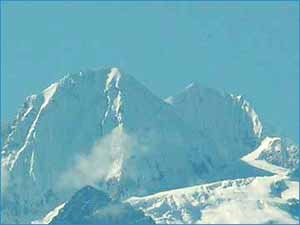
Amazonas is a vast and ecologically unique state in northern Brazil, home to the majority of the Amazon Rainforest, the world’s largest tropical forest. Its capital, Manaus, is a major gateway to the rainforest and a hub for commerce and tourism in the region. The state’s sheer size and biodiversity make it a critical ecological area, housing a vast array of plant and animal species, many of which are found nowhere else on Earth. Amazonas is characterized by its dense, lush forests, winding rivers, and remote Indigenous communities. The Amazon River, the longest in the world, flows through the state, providing life to the region and serving as a vital transportation route. The state is also home to several national parks and reserves, such as the Jaú National Park and the Anavilhanas Archipelago, which are rich in wildlife and natural beauty. The economy of Amazonas is centered around natural resources, including timber, rubber, and minerals, as well as a growing tourism sector. However, the state faces challenges related to deforestation and the preservation of its delicate ecosystem. Culturally, Amazonas is diverse, with Indigenous groups, Afro-Brazilian communities, and other populations contributing to a unique blend of traditions, festivals, and culinary influences, making it one of Brazil’s most fascinating regions.
Explore More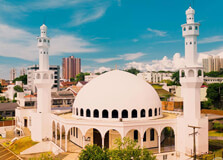
Iguassu Falls, or Cataratas do Iguaçu, is one of the most breathtaking natural wonders in the world, located on the border between Brazil and Argentina. The falls consist of around 275 individual cascades spread over nearly 2 miles (3 kilometers) of the Iguaçu River, creating a dramatic display of water plunging into deep, mist-filled ravines. The Brazilian side of the falls offers panoramic views, providing visitors with a sweeping perspective of this magnificent natural spectacle, while the Argentine side allows a closer, more immersive experience. The falls are situated within the Iguaçu National Park, a UNESCO World Heritage Site, which is part of the larger Atlantic Rainforest ecosystem. This rich biodiversity includes exotic wildlife such as toucans, capuchin monkeys, and jaguars, making it a haven for nature lovers and ecotourists. Iguassu Falls is not only a major tourist destination but also an important ecological site, with conservation efforts aimed at preserving its unique environment. The falls are a significant cultural symbol in both Brazil and Argentina, often celebrated in local folklore and festivals. A visit to Iguassu Falls is a profound sensory experience, with the roar of the water, the mist in the air, and the lush surroundings creating a truly unforgettable natural wonder.
Explore More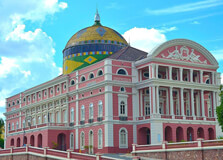
Manaus is the capital of Amazonas, Brazil, and a key gateway to the Amazon Rainforest. Located at the confluence of the Amazon and Negro rivers, this bustling city is often called the "Heart of the Amazon" due to its strategic position in the world’s largest tropical rainforest. Manaus is a vibrant hub of commerce, culture, and tourism, serving as the main entry point for visitors exploring the Amazon region. The city’s history is deeply tied to the rubber boom of the late 19th and early 20th centuries, a period that left a lasting architectural legacy, including the iconic Teatro Amazonas (Amazon Theatre) and several grand European-style buildings. Today, Manaus is known for its economic activities related to the Free Trade Zone, which includes the manufacturing of electronics, motorcycles, and shipbuilding. Manaus is also a gateway to the surrounding Amazon Rainforest, offering boat tours, wildlife excursions, and river cruises. Visitors can explore the vast waterways, indigenous communities, and diverse ecosystems that make this region one of the most biodiverse places on Earth. The city blends modern amenities with deep cultural and environmental significance, making it a fascinating destination for anyone interested in Brazil’s unique nature and rich history.
Explore MoreRhythms Of The Atlantic - Rio De Janeiro - Brazil’s Ocean Coast Tour
8 Days/ 7 Night
Rio De Janeiro
South America Explorer 14 Nights - 15 Days Tour
15 Days/ 14 Night
Rio De Janeiro - Lima - Buenos Aires - Cusco - Iguassu Falls
Exploring 3 Countries Peru - Argentina - Brazil Tour
17 Days/ 16 Night
Lima - Rio De Janeiro - Buenos Aires
12 Days - Amazing South America Tour
12 Days/ 11 Night
Lima - Cuzco - Buenos Aires - Rio De Janeiro
Are you in a party mood, why not visit Brazil? Brazil is the 5th largest country in the whole world and it is situated in the continent of South America. Officially known as Federative Republic of Brazil, it is a place that remains drowned in parties, celebrations, fun & adventures for most of the times. Your trip to Brazil would never be a boring one as you will always find yourself involved in one activity or the other.
Brazil offers a diverse wildlife, which is very hard to find elsewhere. Starting from the dark, mysterious forest of Amazon to the stunning beaches of Rio de Janeiro, Brazil offers a very distinct type of landscape. And who can forget the famous carnival of Rio, which attracts thousands of tourists to Brazil. Brazil is often seen as the place with the best beaches and thus you are advised to take all your swimming stuff with you. The best thing about Brazil is that the expenses are very cheap and thus you can freely enjoy without worrying about the costs.
8,515,767 square km (3,287,597 square miles)
193,946,886 (estimated)
Portuguese (Official)
+55
BRT (UTC?2 to ?4)
Summer (DST): BRST (UTC?2 to ?4)
Brazil
Brasilia.
Real (R$) (BRL).
Christ the Redeemer.
The climate of Brazil changes drastically with the region. The Koppen system analyses that Brazil has as many as five major climatic subtypes, including tropical, equatorial, semiarid, temperate, subtropical, and highland tropical.
The difference in the climate is matched by the difference in the geography of Brazil. Brazil contains beaches, mountains, rivers, and forests. The Amazon Rainforest is popular for the amazing diversity of its wildlife.
Territory & Capital : Brazil is situated between the latitudes 6 degrees N and 34 degrees S and longitudes 28 degrees and 74 degrees W. Paraguay and Argentina are Brazil’s neighbors on the southwest, Colombia on the northwest, Uruguay on the south, Peru and Bolivia on the west, French Guiana, Suriname, Venezuela, and Guyana on the north. Brasília is the capital of Brazil and the largest city is São Paulo.
Suitable Visiting Seasons : The periods between April and June, and August and October are the best periods to visit Brazil.
Brazil relies on the highways, airways, and waterways for transport. There are metro services available in the larger cities. The railways of Brazil are being brought to the international standards.
Contact the nearest Brazilian Embassy for updated details on procedures of applying for visa.